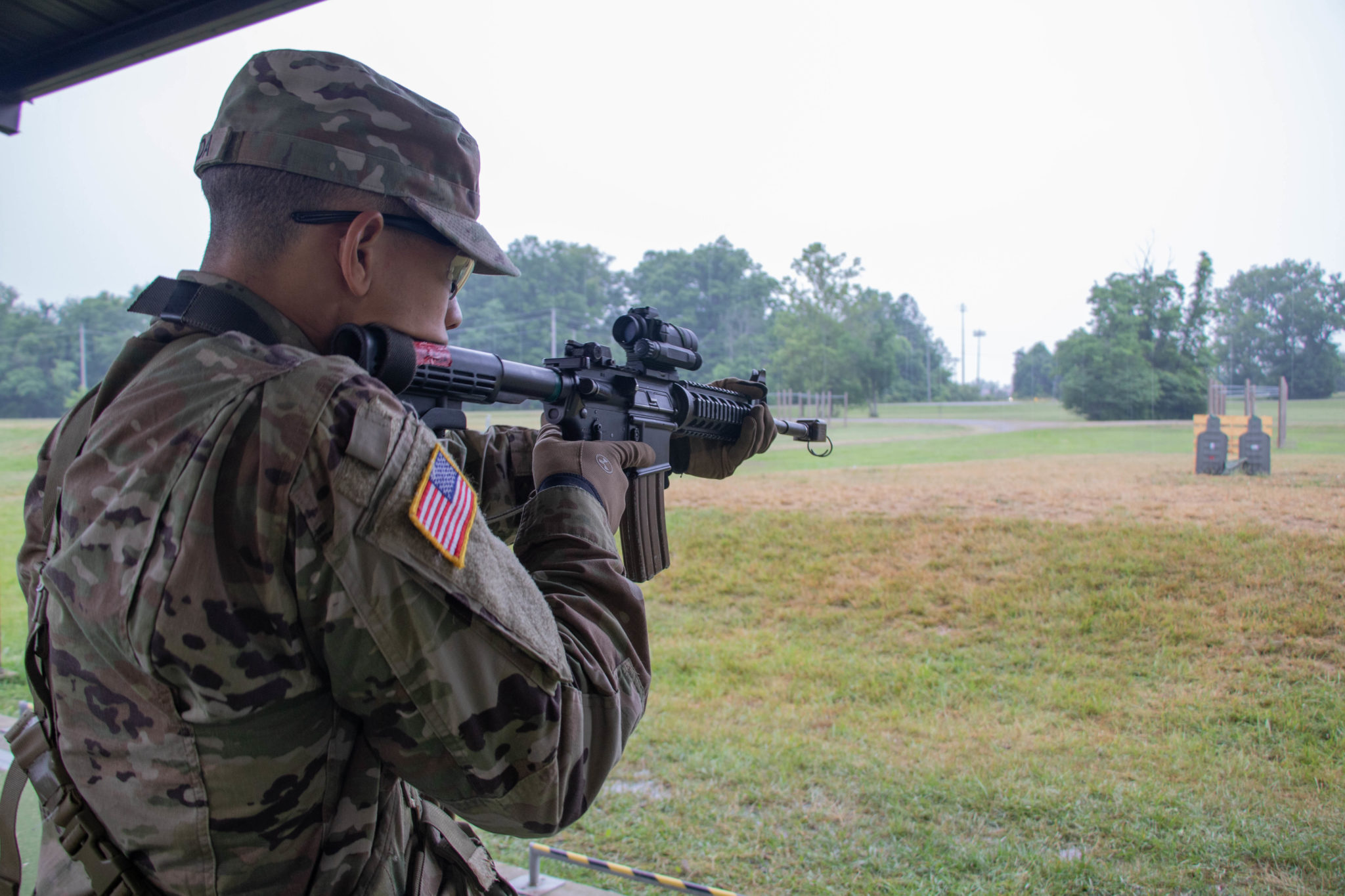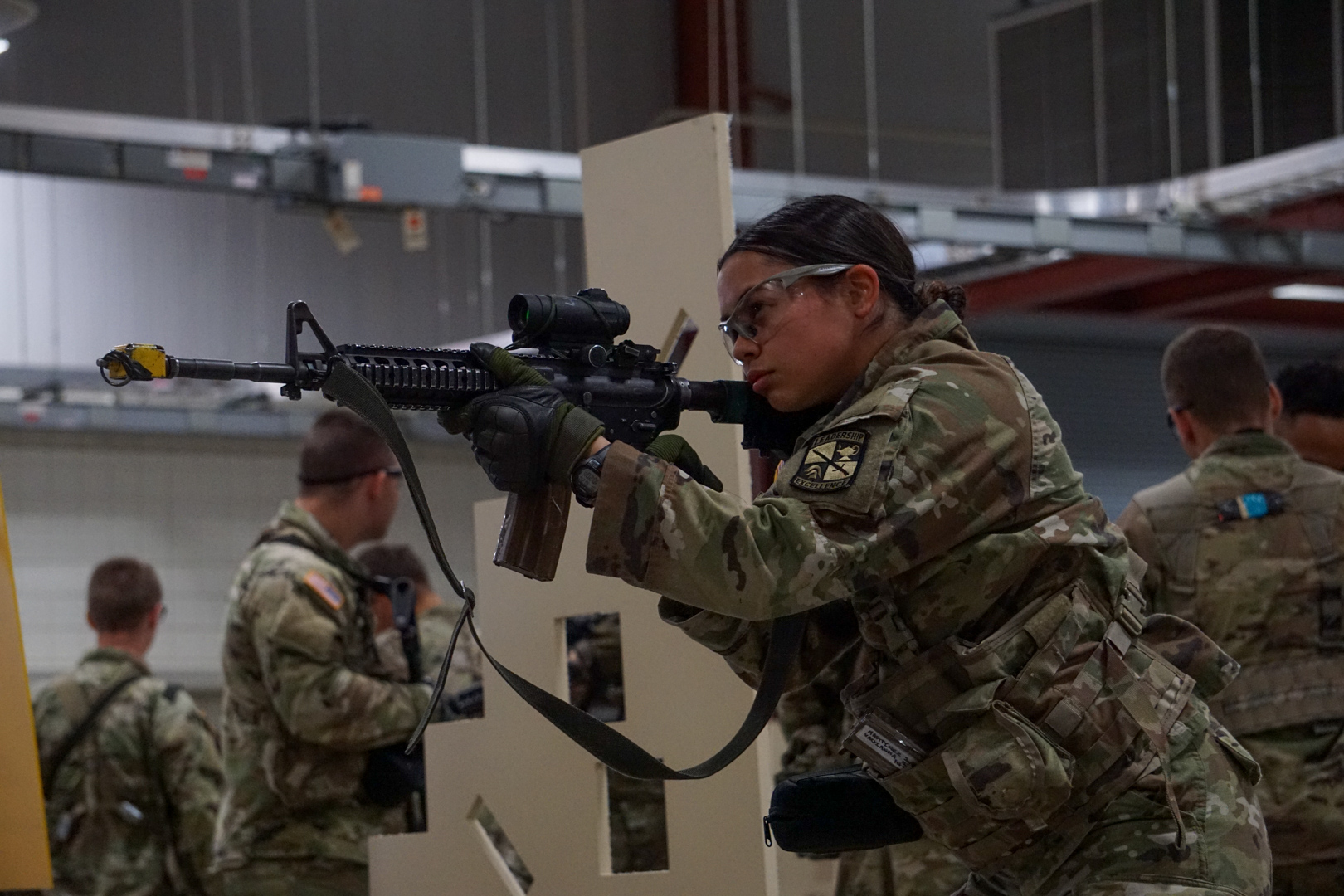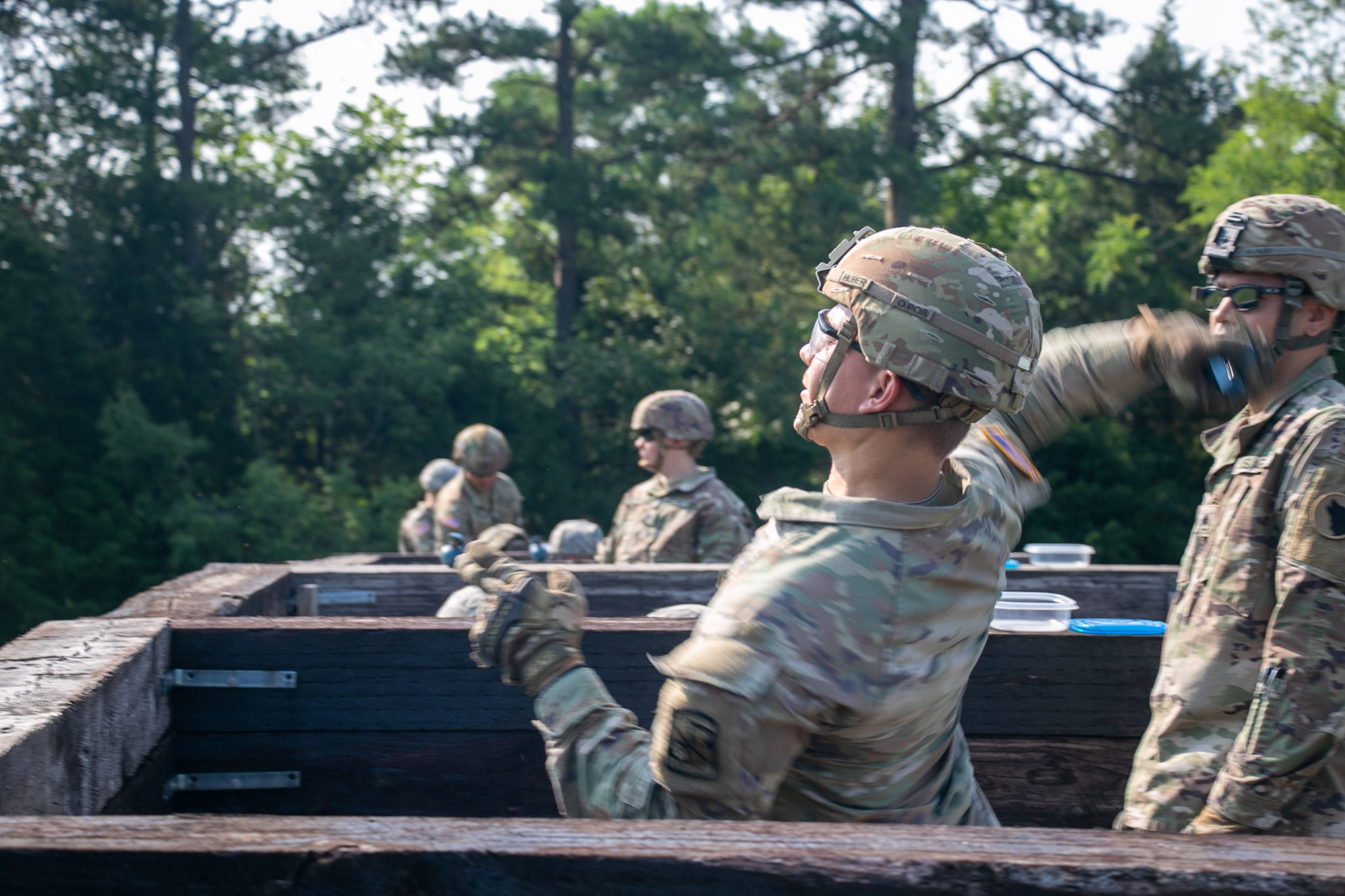By Mattie Cook

Cadets of 3rd Regiment, Advanced Camp set out for a mission on Platoon Situational Training Exercise Lanes (PLT STX) on Fort Knox, Ky., June 17. PLT STX is designed to show Cadets proper patrol and enemy engagement techniques. (Photo by Mattie Cook)
Fort Knox.,- 3rd Regiment, Advanced Camp Cadets spent day 13 of Cadet Summer Training (CST) out on Platoon Situational Training Exercise (PLT STX) lanes learning proper patrol and enemy engagement techniques.
With faces painted, Cadets trekked through the dense Kentucky foliage in an attempt to maneuver silently and surround the enemy.
Abby Kingery, University of South Florida, Fla. explains the scenario.
“We just did a movement to contact. You come across an enemy and are trying as quickly as possible to use the element of surprise, surrounding them and using natural barriers like roads and hills to catch them when they aren’t expecting you. Once our compass man got a visual on the enemy in the area we immediately got down. The assault got online, and then the support got on as well with our heavy weapons so the assault could flank, or surround them and conduct a hasty ambush on these enemies.”
Maj. Frank Cortez, CST PLT STX Delta Company XO, says the techniques Cadets are learning are essential in the field and in combat, but it’s their ability to lead and follow that is the real focus.
“They’re constantly under evaluation. I’m looking at character, intellect, leads and develops. Whether or not they can actually complete the mission comes second. I care about how they’re leading, how they’re managing people and directing; and if they’re not in a leadership position, how are they following?,” Cortez said.
He continued by explaining the takeaways of CST.
“It’s a constant assessment of leadership attributes and competencies. I’m assessing how well you’re a team player, how well you can influence others, time management, and meeting your objective. So then, factor in fatigue. They get irritable then can’t think as clearly. When you’re trying to lead 35 other people that you don’t know, other than the last two weeks, and to get them to do what you want them to do, it can be very difficult. Add in the amount of heavy training they’re doing, it gets really intense,” Cortez said. “Some people will rise and some people will fall. We’re looking at every single person because the best leaders will be able to empower others, hopefully everyone. Some people will break under pressure so we have to assess every one of those areas. We’re preparing them to go into their senior year, become officers and lead a platoon of 42 people to fight and win our nations wars.”
Cadet Kingry is not only an example of the attributes talked about by Maj. Cortez, but brings a unique perspective to training as a nursing student.

Cadets of 3rd Regiment, Advanced Camp communicate strategy during a mission on Platoon Situational Training Exercise Lanes (PLT STX) on Fort Knox, Ky., June 17. PLT STX is designed to show Cadets the example of proper patrol and enemy engagement. (Photo by Mattie Cook)
“Leadership is leadership wherever you go. Whether I’m in a hospital or a platoon leader I’m going to have people below me or around me everywhere, so I’m always going to be part of a team. Even if I’m a leader I will always have someone next to me that I can ask for help or someone above me who can council me,” Kingry said. “You will always be part of a team and there’s always something to be done. As a nursing student, I may not always be doing patrols but you never know. This is the easiest way to put somebody under stress and see how they react. Whether its stress of being in the woods, being hot and sweaty in the field, or in the hospital running a code on a patient, and needing to organize a team to start performing the steps necessary to save their lives, It’s the same stress environment that I have to be able to operate under.”
Cortez is the Assistant Professor of Military Science at Ohio State University, Ohio, and says war is always changing and that adaptability Kingry speaks of is irreplaceable.
“Everything comes down to your ability to influence power and maneuver your forces, that applies to any mission. War, what we’re preparing them for is ever changing and you have to be adaptable. We’re leaders of lives. When you’re in charge you’re leading soldier as well as their families. The ones who graduate here will be very proud. Maj. Gen. Hughes has turned up the intensity here and we’re preparing them.”
Kingry added, “One of the biggest things is assessments. You’re always assessing your patient and adjusting. It’s the same thing with a field problem. You’re constantly having problems coming at you and you have to supervise, refine and fix that problem. It’s the same thing with a patient illness and things that are going wrong in the body. It’s pretty similar actually.”
Later on in the exercises, Col. Lance Oskey, Taskforce Leader, visited the STX sites later on in the day. He emphasized that diversity among areas of study in Cadets is important. In transition between lanes he spoke with Cadets possessing vastly different majors of study; nuclear engineering and history. He was adamant that the Army needs them both equally to ensure a diverse and capable total Army.




